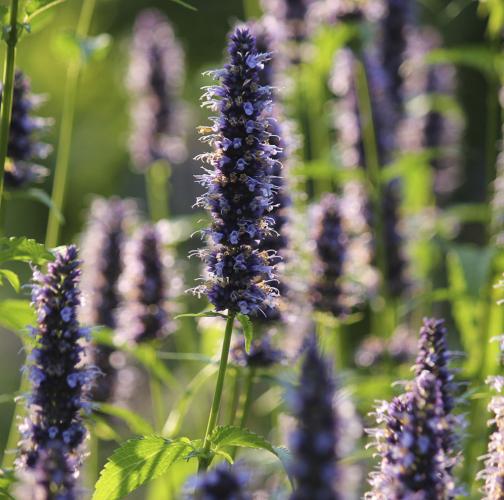In Our Spotlight
Developing Quality Chinese Herbs in the Northeast
It’s all about having choices. Whether one chooses to treat human health maladies with western medicine, eastern medicine or a combination, options for sourcing high quality Chinese herbs closer to home may be on the horizon.
Increased consumer interest in complementary and alternative healthcare in the U.S. has led to rapid growth in the practice of acupuncture and Oriental medicine (AOM) in the Northeast. Since most Chinese herbs used as an adjunct to treatment are grown and processed in China, a logical question has arisen: Can farmers or herbalists grow these same plants in the Northeast? Several factors underlay part of this consideration. Among them: quality control, introduction of a new business model and reduction of the carbon footprint for the distance herbs currently travel form China. In addition, AOM practitioners are accustomed to using plant material imported from China, although some have concerns about the quality of plants supplied by Chinese traders.
Due to the limited season for growing crops in the Northeast, small size of farms, operational costs, and development pressures, Massachusetts growers often struggle to maintain profitable farming operations. Most medicinal and aromatic plants are grown on small farms due to the relatively small quantities needed to meet current market demand and the specialized management and production techniques required to produce the high quality, marketable plant material. In general, growers with small farms in Massachusetts want sustainable, environmentally-friendly, part-time farming operations. The growth of medicinal and aromatic plants is readily adaptable to this type of agricultural system.
Enter Zoe Gardner, UMass Amherst graduate student. Gardner, under the supervision of Dr. Lyle Craker, has conducted a three-year field trial of four specific Chinese herbs at the UMass farm in South Deerfield. She chose plants for several reasons, among them, their adaptability to Massachusetts climate and selection of herbs that are frequently used in Chinese medicine. She then proceeded to collect solid agricultural data to help determine if it was practical and possible to grow consistently high-quality herbs in the Baystate. The plants she studied were two species of Leonurus (motherwort), one species of Agastache (giant hyssop) and one species of Schizonepeta (Japanese catnip). The three-year time frame allowed for seasonal variations including temperature fluctuations, humidity variants and changing weather patterns.
One striking observation she noted was the brightness and colors of freshly-grown herbs, not seen when formulas are produced and manufactured abroad or when dried herbs are used. At this time, there are no production facilities in the Northeast so those who choose to use fresh herbs must be dedicated to boiling them down and preparing them on their own, with direction from willing practitioners. For such practitioners who use U.S. grown Chinese herbs, it is still necessary for them to mix U.S. grown with Chinese-grown herbs.
Factors that require further exploration include: effects of fertilizer on active plants, deeper exploration and understanding of soil structure, micronutrients and microbes (understanding the differences in Chinese soil vs. Massachusetts soil) and comparable efficacy of herbs under these different growing conditions.
Opportunities abound. There are at least two areas of the Unites States where well-established herbalists are growing these medicinal herbs: California and North Carolina. Of particular note is grower Peg Schafer who has penned the book, “The Chinese Medicinal Herb Farm.” Development of local production and post-harvest practices could assist Massachusetts farmers to produce high quality Chinese medicinal plants with uniform levels of bioactive elements. Such local production would ensure the type of plant material desired by AOM practitioners for proper treatment of patients, benefiting growers, practitioners, and those in need of healthcare. The establishment of Chinese medicinal herbs in Massachusetts could provide an income source for small farmers, Chinese herbalists, botanists and help maintain rural farmland. The four species that Gardner selected did well in the Massachusetts climate. They, and others, would most likely be feasible for growers in the area, though production budgets still need to be worked out to determine economic feasibility for growers. Initial results will be published in late spring in the Journal of Herbs, Spices, and Medicinal Plants.

